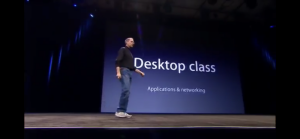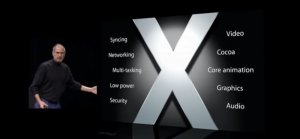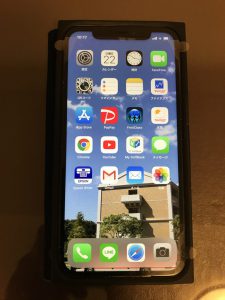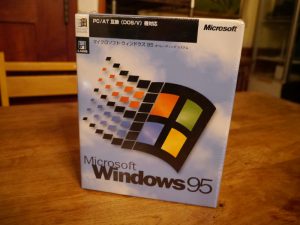( Japanese Version is HERE )
In the previous article, I looked back on my relationship with the smartphone (iPhone), which has now been exactly 10 years. Through this history, I have come to realize, first and foremost, that the smartphone is no longer just an advanced cell phone. It has become a nexus at which people today are in constant and continuous close contact with the people around them, with their social groups, with those who share their interests, and indeed with all the people with whom they can exchange information through this communication tool. And the scope of this communication is truly global in scope. People are attracted to these small network terminals, keeping them close at hand at all times, constantly peering at their tiny screens, operating them, and responding instantly when necessary.
Here, the smartphone is a new thing, completely different from the traditional telephone, which is simply a “one-to-one voice-only synchronous communication tool,” and it seems to be transforming into a new information exchange terminal that will fundamentally change the way human communication is conducted.
Apple’s Steve Jobs made this clear in his presentation announcing the first iPhone to be released in the United States in 2007. First, he talked about how Apple revolutionized the world of personal computing by launching the Macintosh as a truly user-friendly and innovative PC, and later on how the company created the iPod as a digital music player and revolutionized the music distribution industry with its digital music distribution system through the iTunes. The company then went on to create the iPod as a digital music player and revolutionized the music distribution industry with its digital music distribution system through iTunes.
After two and a half years of preparation, the company will launch three new products that are as groundbreaking as its two previous innovations. One is a revolutionary cell phone like never before, another is a new iPod with full-screen operation, and the third is a powerful Internet connection device. And these new products will be launched not as three separate devices, but as one revolutionary new product: Apple’s iPhone smartphone. In other words, from the very beginning of its development, Apple’s iPhone was not just an extension of the cell phone, but a full-screen music and video player, and a revolutionary Internet terminal. To achieve this amazing functionality, he said, the iPhone will be equipped with hardware equivalent to a desktop computer and a state-of-the-art operating system.
What this term means is significant. In other words, he declares, the evolution of the computer has been a violent one, with the mammoth mainframe computer that once thrived losing out to the networked desktop personal computer, or PC, a small animal that could fit on a person’s desk, and then accelerating downsizing to a laptop that is small enough and light enough to carry anywhere. After losing out to the networked networking of a small animal, the desktop personal computer, or PC, that could fit on a person’s desk, he declared that the downsizing had accelerated to a notebook that was small and light enough to be carried anywhere, and finally evolved into a palm-sized device. In other words, although it is easy to be dazzled by the name “smart phone,” which sounds like a “phone,” the smart phone is in fact a high-performance computer, an amazing realization of the 20th century’s science fiction dream of “putting a computer in the palm of your hand. In the famous words of the economic philosopher Engels, “Quantity is transformed into quality. This refers to the fact that when quantity changes to a certain level and exceeds a certain level, it no longer remains at a mere quantitative level, but changes in quality occur all at once around the boundary point.
In other words, to the question, “What is a smartphone to us?” we should answer, “It is the latest computer that has achieved the ultimate in compactness through dramatic technological advances. To the average person, a smartphone is often seen as a multifunctional phone, but I think that probably misrepresents the true nature of a smartphone device. Once again, the smartphone is the latest high-end computer that has been downsized to the size of the palm of the hand, and the phone functionality has been added as a result of its portability for individuals to easily carry around with them.
Symbolic of the fact that smartphones are computers is the fact that they have two major operating systems, iOS and Android, vying for supremacy. This is just like the fierce competition between the two major OSs, MacOS and Windows, during the heyday of desktop PCs. In other words, we should consider the essence of the smartphone as the ultimate miniaturization of computers through the stages of huge mainframes → small desktop PCs → palm-sized ultra-compact PCs, which became so popular that they could never have been used in the PC era.
Here, the fact that “general diffusion” to a wide range of people is also important. Here, too, the phenomenon of “quantity turning to quality” is taking place. Although mainframe computers that occupied huge, air-conditioned, dedicated rooms have been replaced by PCs that fit on individual desks, PCs were still technological products that were difficult to handle unless people had a certain level of knowledge and technical interest. That is why Akihabara and Nihonbashi became PC towns, PC classes appeared in town, and PC geeks could be seen here and there lecturing beginners with smug faces. In other words, even though PCs became popular in the mainstream, they remained within the range of users who had a certain level of technical understanding and could handle them. The PC was, after all, a device used by this particular group of users. The result was not Apple’s Mac, which offered everything in one smart all-in-one package, but Windows’ freedom to allow user-specific customization, even if it was a bit crude or unattractive looking.
However, when “smart phones” begin to spread as a tool that is not limited to a certain group of people with a particular technological interest, but is in the hands of everyone in the general public and used on a daily basis, people simply want a smart tool that is easy to use, hassle-free, and offers convenience in an all-in-one package, and they do not seek special customization and combinations of various functions. They do not demand special customization to combine various functions. This was a major reason why Apple’s Macintosh, which had led the PC world in innovation, was overtaken by Windows, which started as an imitation of the Macintosh and then was overtaken by Mocrosoft. However, when the smartphone was about to be born as an extremely small computer, Apple, with the keen foresight of Steve Jobs, was the first to introduce the iPhone as an all-in-one smartphone with a high degree of perfection that ordinary people could use without resistance, and succeeded in gaining the support of a wide range of ordinary people. Microsoft’s Bill Gates, who had become the dominant player in the PC world, probably missed this major shift in the IT world. (Microsoft, as its name suggests, was focused on software and did not have the integrated software/hardware manufacturing system that Apple had. The world of smartphones has now become the focus of the times, and the battle between Apple’s iPhone OS, iOS, and its rival, Google’s Android OS, is now a one-on-one battle.
Looking back at the IT world over the past 30 years, I am reminded of the fact that the trend from huge mainframe computers to desktop PCs and then to smartphones is actually a trend. Apple Inc. and its leader, Steve Jobs, are unique in that they have continued to create products with outstanding foresight and innovation. There is no doubt that without his presence, the IT world of the 21st century would have taken on a completely different aspect.





